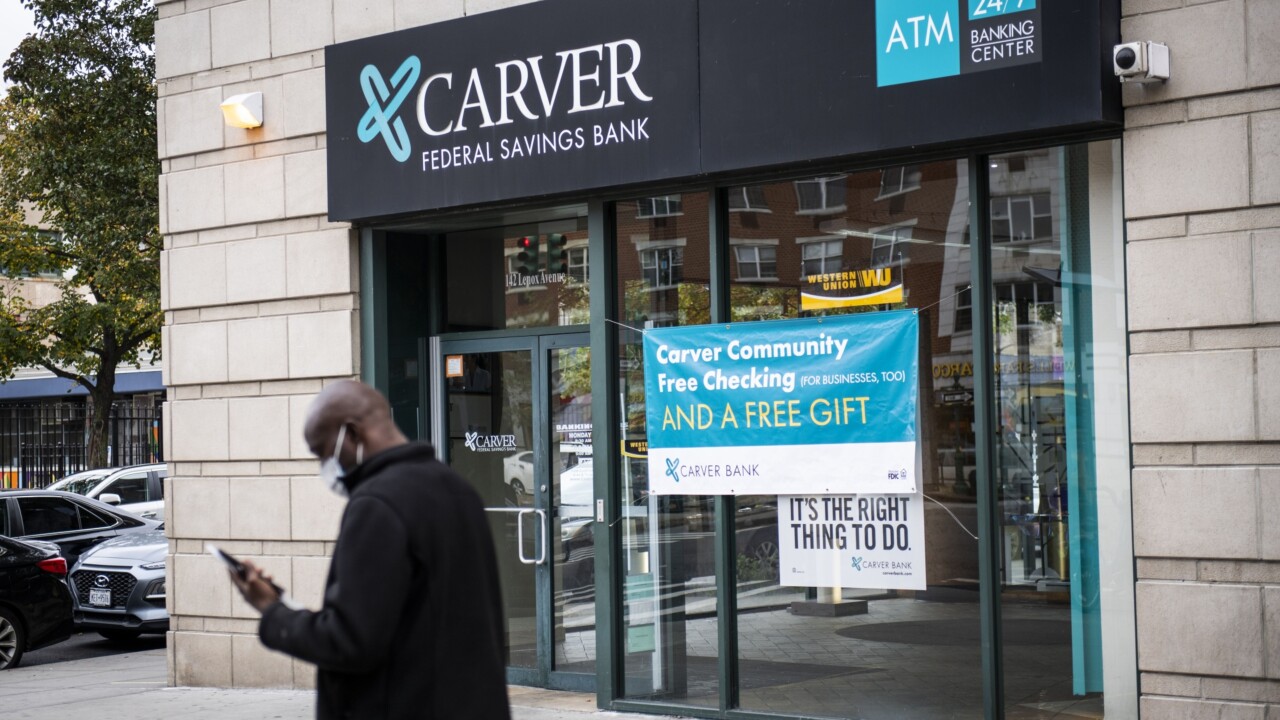-
The North Carolina regional bank is placing a big bet that targeting Pennsylvania's high earners will offset the state's reputation for having slower-than-average growth.
August 18 -
The North Carolina company had made it clear it would pursue more acquisitions after closing its purchase of the $19 billion-asset Susquehanna Bancshares earlier this year.
August 17 -
Kelly King, who is close to closing BB&T s biggest acquisition to date, told analysts that he could look to add up to $20 billion in assets next year through acquisitions. Management also used a conference call to emphasize the ongoing importance of organic growth.
July 16 -
Mitch Feiger, CEO of MB Financial, along with Mark Hoppe, former Taylor CEO, reflect on the merger, the regulatory environment and keeping key people happy in the highly competitive Chicago market.
September 19 -
The company spent years looking in vain for the right deal at the right price before finding TF Financial. The deal adds a healthy bank and a much-needed beachhead in New Jersey, though it also pushes National Penn closer to $10 billion in assets.
June 4
National Penn Bancshares in Allentown, Pa., has added a new option for banks nearing $10 billion in assets: Sell to someone much larger.
The $9.6 billion-asset company, which had spent recent months talking about an
National Penn found it challenging to expand, as suitable targets were hard to find. So BB&T gave the company an exit strategy it couldn't resist.
"You have to evaluate all of your options," Scott Fainor, National Penn's chief executive, said in an interview. BB&T "ended up being the best option."
BB&T, in a negotiated deal, agreed to pay $1.8 billion in cash and stock, a price that represents 220% of National Penn's tangible book value. A solid payout, combined with regulatory demands tied to the Dodd-Frank Act and other laws that kick in at $10 billion in assets, should give banks of similar size something to think about.
Several banks have crossed the threshold with sizable deals, including MB Financial, Prosperity Bancshares and Old National. National Penn, due to the fragmented market in Pennsylvania, may have needed to string together a number of smaller acquisitions to overcome rising compliance costs, industry experts said.
"The market doesn't like it when you nibble," said Chris McGratty, an analyst at Keefe, Bruyette & Woods. "They like it when you do larger transactions."
National Penn, even if it had completed more deals, would have felt pressure to keep pouring funds into its operations as it faced mandatory stress testing and caps on interchange fees. "We could have moved into the future, but we would have had to make investments in products in services," Fainor said.
National Penn's willingness to accept a "modest premium" shows that management and the board were eager to make an exit and were likely worried about future earnings potential, said Chris Marinac, an analyst at FIG Partners. "This is clearly a head-scratching deal, because this is a company that a lot of us thought would stay independent," he said.
"The timing was a bit sooner than I expected," McGratty said.
There were other indications that National Penn wasn't looking to sell. Last year, the company moved its corporate headquarters from Boyertown, Pa., to Allentown. And the New York private-equity firm Warburg Pincus had recently
Private-equity investors tend to stick around to benefit from the "upside" of a sale, said Robert Ramsey, an analyst at FBR Capital Markets.
Fainor said the transaction, which came together over 90 days, stemmed from a close relationship he had developed with Kelly King, BB&T's chairman and chief executive, while they were serving on the Federal Reserve Board's
More banks with $8 billion to $10 billion in assets could look to this deal as a signal to seek buyers, McGratty said, though he said more regional banks must first express an interest in making acquisitions.
That will eventually change as more regionals warm up to M&A, BB&T's King said in an interview.
"I think that a lot of banks with $5 billion to $10 billion in assets are going to recognize that it is an unsolvable problem when they look at the massive investment they have to make to comply," King added. "The cost for them to expand is enormous, and they would go through a trough of several years where their stock price would be diluted. From an economic view selling is almost a no-brainer."





